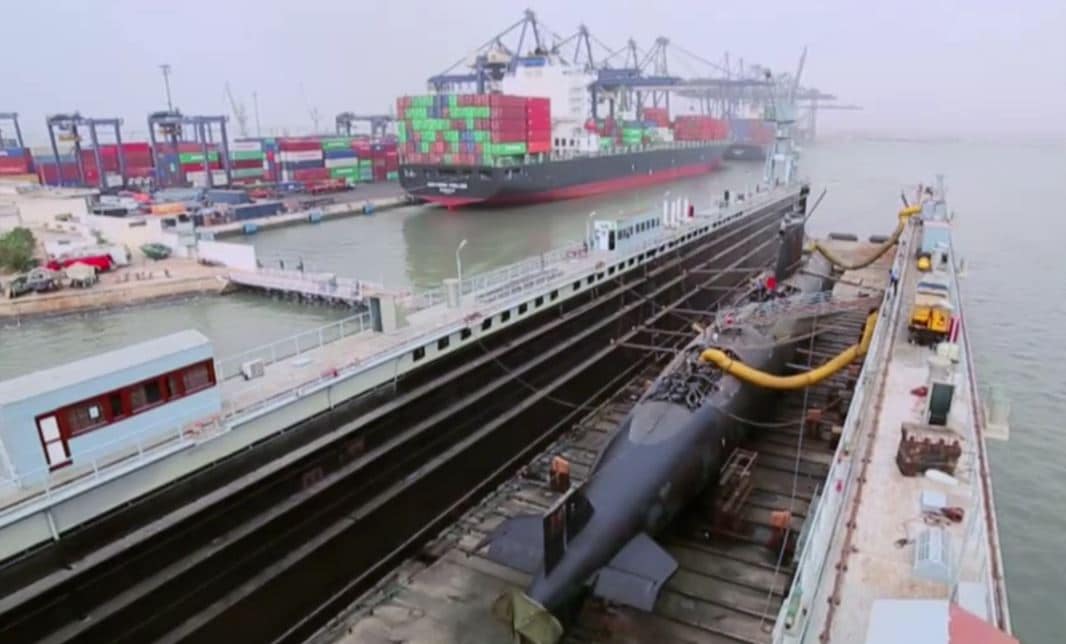2759Views 5Comments

Pakistan approves Gwadar Shipyard program
The Pakistan Navy Chief of Naval Staff (CNS) Admiral Zafar Mahmood Abbasi announced that the Pakistani government approved plans to construct a new shipyard in Gwadar, the country’s new deep-sea port and an integral piece to the China Pakistan Economic Corridor (CPEC).
Reported by Pakistan’s state-owned Associated Press of Pakistan (APP), the CNS stated that it would take three to five years to complete the shipyard. Construction will begin in the near-term.
Lauding the step, Adm. Abbasi stated, “Technical know-how and basic industrial infrastructure to support Research and Development (R&D) is available in the country. However, it is time to integrate and optimize these facilities with a view to further strengthen process of self reliance.”
Following up proposals in 2008, plans to construct new shipyards in Gwadar and Port Qasim have been in place since 2014, albeit with the aim of attracting foreign direct investment (FDI) and spurring private sector growth in shipbuilding. Pakistan believes shipbuilding would be a good avenue for generating employment and supporting economic growth in the country.
In response to the delays, Pakistani policymakers – such as those in the Senate’s Standing Committee on Defence Production – repeatedly called for greenlighting the program.
Under the framework defined in 2008, Gwadar would be the first to have a new shipyard. Initially, Gwadar would offer ship repair and maintenance services, but it would eventually transition to constructing Very Large Crude Carriers (VLCC) and Ultra Large Crude Carriers (ULCC). Gwadar Shipyard was to have two dry docks with the capacity to handle 600,000 DWT (deadweight tonnage).
In 2014, the government had envisaged FDI as the means to fund construction, it is not clear if that is still the case. One alternate scenario could be for the Pakistani government to fund construction initially, but privatize Gwadar Shipyard through domestic and/or overseas investors in the future.
Currently, the entirety of Pakistan’s shipbuilding, maintenance and repair work is undertaken at the state-owned Karachi Shipyard & Engineering Works (KSEW). In parallel to building new shipyards, Pakistan is also modernizing KSEW. In July, it awarded a $30 million U.S. contract to TTS Group for its Syncrolift ship-lift-and-transfer system, which will connect by rail to 13 in-land sites for construction and servicing work.
Notes & Comments:
The long-term viability of Gwadar Shipyard and Post Qasim Shipyard succeeding as private sector entities is contingent on them securing domestic and overseas orders. Otherwise, investors will not secure enough return-on-investment (ROI) to compensate for the cost of constructing and/or acquiring these shipyards. However, to Pakistan’s credit, plans for these new shipyards were made with the realization that KSEW would not have the capacity to support forthcoming domestic demand, such as the Pakistan Navy, which is undertaking a widespread fleet recapitalization effort. Furthermore, commercial/merchant shipowners contracting ship-repair work to Dubai and Singapore indicated that they would have used Pakistan instead had KSEW offered the necessary capacity (Dawn News). Gwadar will provide that necessary capacity.
Investing in ship design institutes for commercial and naval applications could also enable KSEW, Gwadar and Port Qasim to offer original products for both domestic and overseas markets, further adding to their commercial viability. Pakistan currently consults with foreign firms in China, Turkey, Europe and the U.S. for ship designs, especially for the Pakistan Navy.
If Pakistan’s shipbuilding expansion efforts are being driven by genuine market demands, then these could amount to commercially viable entities. However, with the macro-economic objective of retaining hard-currency/foreign-currency being a factor, the Pakistani government will need to be mindful of FDI as that can result in hard-currency outflows (i.e. with foreign-owned equity resulting in a portion of profit/capital generated in Pakistan to return to the FDI source as ROI). Private investment from domestic firms could see the profit kept within Pakistan, thus saving on hard-currency outflows. It would also provide Pakistan’s indigenous private sector a base upon which to grow.
Post Note: Quwa Premium subscribers will find a deeper discussion of private sector investment, be it via FDI, domestic investors or offsets, in “Pakistan’s Defence Industry: Constructing a Domestic Marketplace and Examining Offsets” published on December 12, 2017 (see here).



5 Comments
by sami shahid
Awesome… a very sensible decision taken finally. The Gwadar production facility will help us increase the production, build & repair our assets in case the Karachi facility is damaged due to war, generate employment in Gwadar and obviously generate income while we repair commercial ships on their way to and from Singapore & Dubai.
by Jasim Aquil
I hope they complete it this time , very slow progress on shipyard ,gwadar, I first heard about it nearly 12 to 13 years ago, well better late than never
by TZK
India has about 20 Bangladesh has 5, KSA and Qatar 1 each and Pak has so far 1 (KSEW). Makes sense to build one at Gwadar.https://en.wikipedia.org/wiki/List_of_shipbuilders_and_shipyards
by Steve
The government and our embassies should promote exports vigorously, particularly shipbuilding which is hugely value added. The rest of the world does it. Nobody is going to order anything without a major push supported by high quality products and lower prices. We still have an advantage in lower labour costs. Where are the poly tech institutions to train local manpower? We can also build quality fishing trawlers.
by jamshed_kharian_pak
Our politicians busy with money laundering it was very difficult task to build a shipyard, with coming new Govt we must keep hope Alive